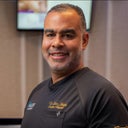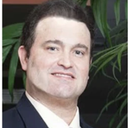hello,Is is fantastic that you are researching these issues! The pulmonary fat embolism (PFE) is a mechanical blockage of the pulmonary veins by fat particles. It occurs when injection technique injures a vein and fat particles travel through the venous system and the pulmonary veins to the heart. While not all PFE’s are fatal, many do result in death within the first 24 hours following surgery. The Pulmonary Fat Embolism (PFE) issue came to our attention in 2015 with a publication by Plastic Surgeons in Mexico and Columbia . It cited the high number of PFE's with BBL. In 2016, a Task Force was created by the Aesthetic Surgery Education and Research Foundation (ASERF) , to study these PFE complications. Then in 2017, a multi-society Gluteal Safety Panel Task Force team of Plastic Surgeons was set up to study the issue in depth.This new Task Force Team invited 19 Plastic Surgeons from ASPS, ISPRES, ISAPS, and ASAPS, and IFATS. I am on this Task Force team and we have spent a great deal of time over the past ~2 years discussing and studying autopsy reports along with cadaver injection sessions to see where fat goes when it is injected with different techniques. Technically speaking, he main point that we have agreed upon and made public are that fat injections in the buttocks should only be made in the subcutaneous plane, and not into the muscle or deeper. The problem still remains that many surgeons THINK that they are in the subcutaneous plane (when injecting), but are not. I have employed ultrasound techniques to confirm my subcutaneous plane of injection. I also inject small amounts in each injection pass. I do not blindly pump fat into the butt. I am fully confident that all of my fat goes into the subcutaneous plane. Manual fat injection techniques do result in the surgery taking longer, but I sleep very well at night. More information has been obtained since the Task Force's injection sessions last summer and will be published in a paper describing our findings. I have been performing this procedure for 15 years and I will say that my original beliefs about technique have been validated. Some of this is just common sense. Do you rather a high pressure injection technique where the fat is pumped in quickly and blindly over a 1 hour session, or do you want a manual technique where small amounts are injected with each pass? Which do you think offers more control and less damage to the blood vessels?Another common sense thing is to make sure your Plastic Surgeon is Board Certified by the American Board of Plastic Surgery. There are many doctors who are performing the BBL who do not even have any type of Surgical Residency, which is utterly mind blowing. The public should beware that there has very recently been an organization founded of 'Gluteal Surgeons' who accept as members NON Board Certified Plastic Surgeons. While they may have good intentions to follow Task Force guidance, beware. I have been writing about PFE's for some time. Please see my original guidance from 2017 in the link below. I continue to believe that when performed with these principles by a Board Certified Plastic Surgeon this procedure is safe and produces amazing results.Good luck! Ricardo L Rodriguez, MDBoard Certified, American Board of Plastic Surgery





